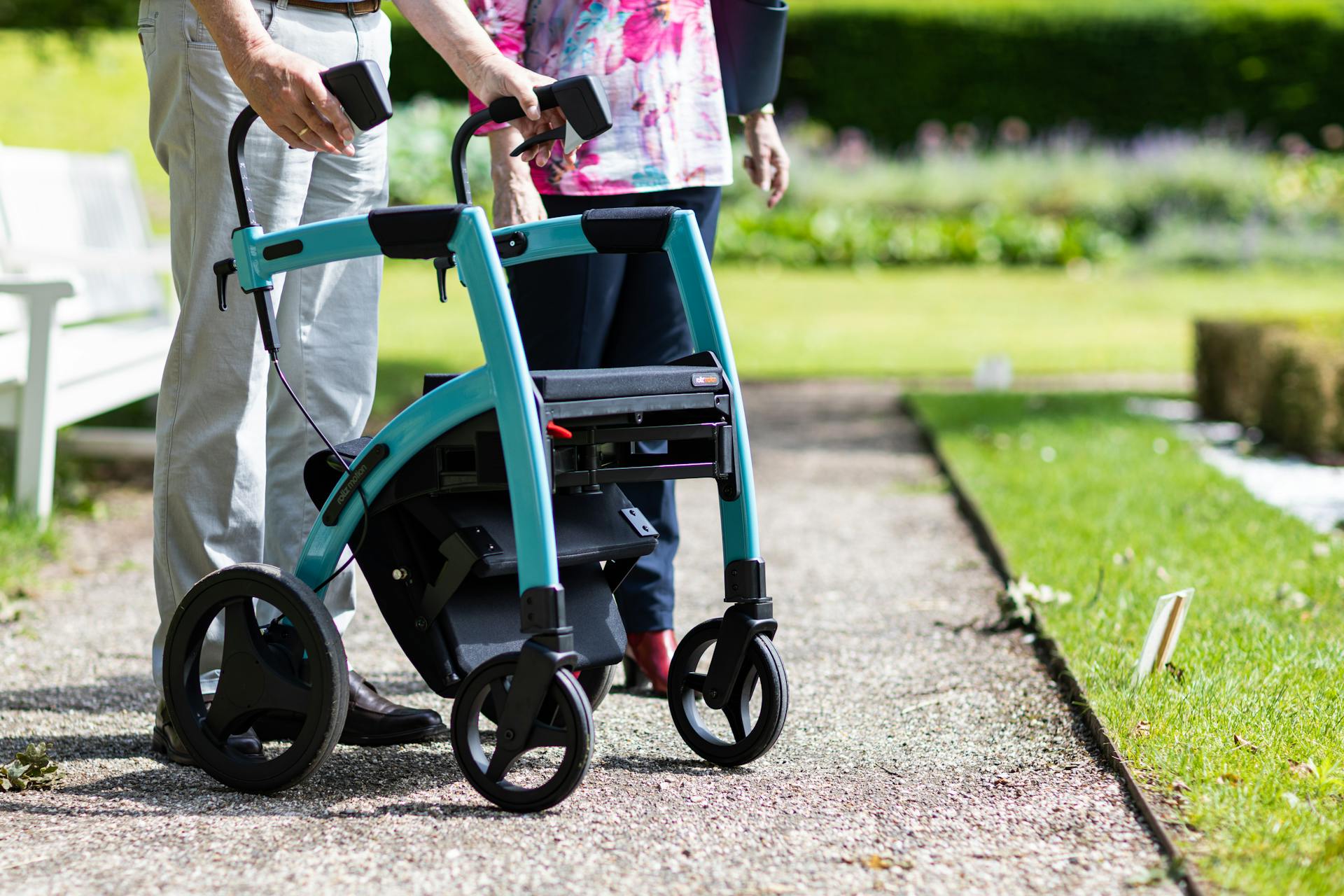A lot of people benefit from using a walker such as those recovering from an injury or surgery as well as older adults who need help with their balance. Whatever your condition, you’ll want to make sure that your walker is as practical as it is helpful. If it’s too wide, you’ll find it difficult to get through doors and down narrow walkways.
So, in this guide, I’ll be discussing how wide a standard walker is, why you might need to use one and how to set the walker so it’s comfortable for you.
What’s The Standard Width Of A Walker?
The width of a standard walker could be anywhere between 25 inches and 29 inches. Which you choose will depend on where you wish to use it and whether there are any narrow points such as corridors and entrances that you’ll need to get through.
If you are faced with such obstacles then it’s possible to purchase a special narrow walker and these can be as small as 22 inches to 24 inches.
As well as looking for a narrower walker when getting through tight doorways, it’s a good idea to also consider the wheels. Now, not all walkers have wheels and there’s a difference between a front wheeled walker and a rollator with the latter usually being fitted with four wheels.
However, front wheeled walkers often have the wheels on the outside which can get in the way when moving through tight gaps. In order to get more clearance, I’d recommend choosing a front wheeled walker that has the wheels fitted to the inside of the frame.
Why Might You Need A Walker
Walkers are common mobility aids that are used by a variety of people both young and old. They’re often used by older people whose mobility has deteriorated but they can also come in handy for those who are recovering from surgery or an injury and need help getting about and for rehabilitation.
Balance is one of the main reasons you might find a walker useful. Whether this is due to age or a physical injury, staying upright can be difficult. Using the correct muscles without spreading the feet too far apart to ensure balance can be made simple through the use of a walker.
A lot of overweight people find that a walker makes getting about a lot easier. When you are carrying a lot of body weight, this can be difficult to move around and can cause pain or weakness in the lower limbs. Having a walker to hold onto can relieve some of that and improve mobility.
Finally, a lot of people use a standard walker to improve their endurance. This is often the case for patients with respiratory condition, heart disease, or any other condition that causes them to become more quickly fatigued.
How To Make Sure Your Walker Is The Right Height
It’s also worth considering the height of your walker as when this isn’t set correctly, it can make using it difficult and uncomfortable. A standard walker could be anywhere between 32 inches and 40 inches. What you choose will depend on your height and these standard models are generally made for people between 5’5 and 6’6.
To ensure that your walker is the correct height, you’ll need to place it in front of you and stand as upright as possible. The top of the walker should be the same height as your wrist, if it’s not then it isn’t the right height.
If the top of your walker is at your fingertips then you’ll need to increase the height whereas a walker that’s in line with the wrist will need to be lowered.
It’s also important to make sure that all four legs of your walker are at the same height. Not doing this will make the device less stable and potentially dangerous. If there are wheels on your walker then it’s essential that these always remain in contact with the ground.
When using your walker, it should feel comfortable and you shouldn’t have to bend over or have to raise your shoulders to get a grip on it.
A lot of people think that a walker is a device that should be pushed in front of the user but this is not correct. In fact, you should fit nicely inside the walker so that your hips are in line with your legs. When moving, the walker should stay as close as possible to you as this will provide you with the best support.
Final Thoughts
A walker is a type of mobility device that can improve balance and endurance, therefore making it easier to get about for people who are injured, recovering from surgery, or who are suffering the effects of age.
Standard walkers are typically between 25 and 29 inches in width but there are narrower models where these are needed. While width is an important consideration in terms of how easy it is to move through doors and other tight spots, height is also essential in making sure that the walker is comfortable to use.

